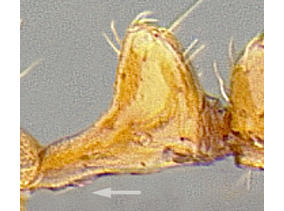TAXA (also search by using taxonomy search bar in header)
Solenopsis geminata (Fabricius, 1804)
Nomenklatur
- Syntype: OUMNH - ANTC20953 - CASENT0901430
- Holotype: OUMNH - ANTC20954 - CASENT0901431
- Holotype: OUMNH - ANTC20955 - CASENT0901432
- Syntype: OUMNH - [node:field-collection-code] - CASENT0901969
- Syntype: BMNH - [node:field-collection-code] - CASENT0902346
- Syntype: BMNH - [node:field-collection-code] - CASENT0902347
- Syntype: BMNH - [node:field-collection-code] - CASENT0902348
RINGKASAN
Solenopsis geminata is a medium-sized reddish species with 10-segmented antennae, two-segmented antennal clubs, no antennal scrobes, nopropodeal spines, unsculptured heads and bodies, abundant thin and erect pilosity, and a polymorphic worker caste. The largest workers have disproportionately large and square-shaped heads. Like all myrmicines, S. geminata has a two-segmented waist and a gaster armed with a stinger. Solenopsis geminata is commonly referred to as the Tropical Red Fire Ant. It is an aggressive species with a painful sting and is known to cause damage to ecological and agricultural systems. For a more complete review of the biology, impacts and management of S. geminata, users are referred to the IUCN/SSC Invasive Species Specialist Group (ISSG) web page. Although S. geminata is an unpleasant ant, it is preferable to S. invicta. If either species is collected during invasive ant surveys, it is highly recommended that specimens from each sample be identified under the microscope to confirm the identity.






